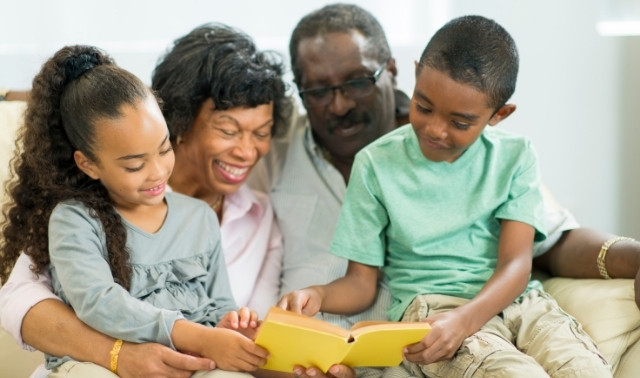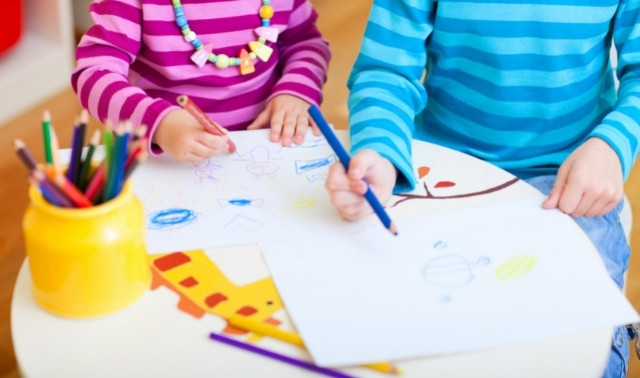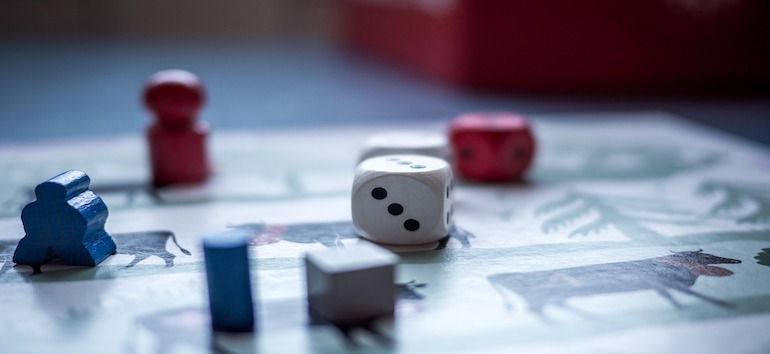Sign up for the Family Tree Newsletter! Plus, you’ll receive our 10 Essential Genealogy Research Forms PDF as a special thank you.
Get Your Free Genealogy Forms
"*" indicates required fields
You might not expect to see a group of adolescent boys absorbed in a discussion of pedigree charts, marriage certificates and census records — especially at 8:30 on a Saturday morning. But that’s just what happened a few months ago when I helped teach a genealogy merit badge class for a group of local Boy Scouts. Here were 10 teens and pre-teens, eagerly telling me and two other counselors — as well as their peers — about their family history discoveries.
Their enthusiasm really shouldn’t have been that surprising. Sure, you’re more likely to find 9-year-olds swapping baseball cards than birth certificates. But kids genuinely enjoy learning about their families — they want to understand where they come from just as much as we do. Liana Brittain, a fifth-grade teacher and author of the book Genealogy for Children (Educational Support Personnel), says that at the end of the school year, 75 to 80 percent of her students pick genealogy as their favorite area of study. Genealogy helps kids attach meaning to history and to their own lives.
Of course, that’s not the only reason to encourage children’s interest in their past. It’s a way to bridge the generation gap, helping you build meaningful relationships with your grandkids, kids, even nieces and nephews. And involving the younger generation in family history is like “insuring” the genealogical treasures you’ve toiled to uncover. You can leave them your research knowing they’ll likely pick up where you left off — delving further into the past, and just as important, chronicling tomorrow’s family history.
ADVERTISEMENT
A scouting badge or a school assignment can convince kids to become junior genealogists — and so can you, simply by sharing your stories and research in a kid-friendly way. Here’s how to help the next generation inherit your addiction to family history.
Help them recall their own personal history
Before you head for the courthouse or cemetery with your “genealogists in training” in tow, take time to help kids develop an interest in their past. That starts with their own personal history: Jog their memory about important events in their lives — the birth of a sibling, a family vacation — and share your recollections of events they don’t remember, such as “when you were born” stories. They’ll quickly discover that family is a big part of their identity. Once they see themselves as part of something larger, they’ll become even more curious about how they fit into the puzzle.
Anecdotes and memories are great tools to arouse children’s interest in their ancestry. “Kids love to listen to stories that have relevance to their own lives,” says Maureen Taylor, author of Through the Eyes of Your Ancestors (Houghton Mifflin), a genealogy guide for kids. “Begin by talking about things you did when you were their age. You’ll find they want to hear the stories again and again.”
ADVERTISEMENT
Then move further into the past by connecting family stories to a child’s interests — just about any activity has the potential to connect to family history. Use Lizzie’s rock collecting hobby as an opportunity to tell her about the ancestor who joined the California gold rush, for instance. If Joey enjoys building model airplanes, tell him about Grandpa’s experience as a World War D pilot; maybe the next model he builds will be the type of plane his grandfather flew. Once Brian finds out Great-great-grandpa was a sheriff, you may find him assuming that role when he plays cops and robbers with his neighborhood buddies.
Family History Fun for the Whole Family
You know your enthusiastic cries of “Let’s look at vital records indexes!” probably aren’t going to make Billy and Susie’s pulses race. So how do you show them that learning about dead relatives can be just as fun as playing video games? Try these six activities to pique their genealogical curiosity and explore their past creatively:
1. Excavate Grandparent’s attic or basement.
Countless treasures and stories hide among the old “junk” packed away in boxes and trunks. Let kids root through Grandma’s hat boxes, Grandpa’s model train set, old clothes and other treasures. These mementos give children a glimpse of their relatives’ younger years and show them how times have changed. Make a special effort to pull out items from a parent’s childhood — Mom’s Barbie dolls or Dad’s high school science project, for example — so kids can see what their mother or father was like at their age.
2. Tour the cemetery.
Visiting family grave sites shows children that their ancestors were real people. They’ll also learn about the clues found in cemeteries, a lesson they’ll appreciate if they start doing genealogical research on their own. Point out ancestors’ tombstones first, then other family members’. Explain everyone’s relationships to each other, and how they’re related to the kids (“This is Great-great-grandpa’s sister Mary. That would make her your third-great-aunt.”). Bring a book on gravestone art such as Allan Ludwig’s Graven Images: New England Stonecarving and Its Symbols (Utah State University Press) so the children (or you) can look up what the symbols on the headstones mean.
3. Throw a birthday party for an ancestor.
A birthday celebration is a fun way to teach kids about an ancestor’s life and times. You might start with your grandmother or grandfather — someone you knew but the kids didn’t — and celebrate the way the family did when that relative was still alive. Maybe even wrap up a few mementos of that person as “presents”; when the kids open them, you can share the story behind them. Or choose an ancestor who lived during a time period kids would recognize, such as the Civil War or Colonial times, and celebrate the way your ancestor might have back then.
4. Prepare Great-grandma’s favorite family recipe.
Don’t keep Great-grandma’s apple pie recipe a secret — at least not from the kids. Instead of prompting thumb-wrestling matches over who gets the last piece, your family’s generations-old favorite recipe can keep Grandma alive in her great-grandchildren’s memory, even though she may have died years before they were born. Children will learn that creativity and patience were important ingredients in heirloom recipes.
5. Make a family trivia game.
This is a good activity for family gatherings because you can draw on many relatives’ memories and experiences. Everyone can brainstorm questions, focusing on close family members first: What is Dad’s favorite color? Which famous singer did Aunt Lucy write love letters to? Use your genealogy information to extend the questions to more distant generations: Which country did Great-great-grandpa Heinrich emigrate from? Then let the kids turn the trivia into a game. See the June 2000 issue of Family Tree Magazine for a guide to creating a family history game. Or use a kit you can personalize, such as the (Your Surname) Family Trivia Game from Heart’s Corner.
6. Create a time capsule — in reverse.
If your ancestors had left a time capsule, what would have been in it? Pick an ancestor and try to create a snapshot of his or her life. If you have objects such as photographs, recipe cards or diaries, make copies and include them in the time capsule. Kids can also recreate “artifacts” from the chosen ancestor’s lifetime using historical and genealogical facts. For example, they could use a marriage date and place to make up a wedding invitation. Create a newspaper page detailing the important events of the time. Show the trendy fashions that ancestor might have worn. Have kids draw or print out a picture of what a dollar looked like and find out what it would be worth in today’s money. Display the “artifacts” in a scrapbook or on a family website.
Share family history in the context of their studies, too. “There’s an infinite variety of possibilities to pull genealogy into the learning environment,” says Brittain. Her genealogy curriculum encompasses oral and written communication, math, research, media and social studies through activities such as conducting interviews, writing biographies and discussing naming patterns. Most students do a family history project at some point (often in intermediate grades), so seize on these assignments as a chance to get youngsters hooked on family history.
Even if it’s not a regular part of children’s curriculum, you can inject a dose of genealogy into their schoolwork. When kids study the Revolutionary War, talk about their colonial ancestors. During a unit on genetics, discuss your family health history. Use geography lessons to show where and why your ancestors migrated. You may find that kids develop a new interest in topics they otherwise found boring, because suddenly those subjects connect to them and their family.
How to Make Genealogy Research Appealing to Children
When kids are ready to turn genealogy into a hobby of their own, prepare to take a different approach than you’re used to. Choose age-appropriate activities, advises Taylor, and keep in mind that many kids aren’t interested in the details. “Don’t overwhelm them with full names, dates and place of birth,” she says. “Lure them in by taking advantage of their natural curiosity. For instance, show them photographs or teach them games from your youth. If children think that family history is fun, they will be happy to learn more in small pieces.”
Assemble a genealogy activity box
You might put together an activity box with art supplies, a scrapbook kit, disposable cameras, clipboards and copies of old photographs. Or create a genealogy “treasure chest” full of family memorabilia. Children enjoy looking at old photographs and seeing how clothing and hairstyles have changed.
Show them how to fill out a family tree chart
Kids also love to fill out pedigree charts, so show them how to use these and other charts to keep track of their ancestors. When adoption, stepfamilies or half-siblings are part of the family tree, don’t force kids to stick within the bloodlines-only frame of traditional pedigree charts — let them do whatever makes them comfortable. You’ll find charts that reflect different kinds of families in Brittain’s book, such as a “single branch” tree and a “mirror” tree that displays a mother and stepfather on one side and a father and stepmother on the other. Kids may even want to design their own family tree.
Let them use technology for genealogy and family history projects
Kids are growing up in a wired world, so take advantage of their tech savvy to involve them in preserving the family history. Work together to scan photos and create online scrapbooks. Have them take pictures of documents and relatives with a digital camera. Make movies at family gatherings. Show children how to use your genealogy software to print family trees and charts and to save facts and stories about ancestors. Older kids might even want to create a free family website.
Genealogy is also a constructive way for kids to use the internet and email. Encourage them to keep in touch with far-flung relatives they don’t usually see in person. Introduce them to Internet “cousins” who can help broaden their knowledge of the family — as well as their view of the world. Kids will quickly learn about the country their ancestors came from by “talking” to a relative who lives there. But be sure to monitor kids when they’re using the computer, says Brittain.
Make emailing a family activity to help younger kids who aren’t as comfortable with their writing skills. Steer them to Web sites you’ve taken the time to check out — including your own favorite family history sites. Ira Wolfman, author of the forthcoming Climbing Your Family Tree: Online and Offline Genealogy for Kids (Workman Publishing), points out that kids can find most of the genealogical information they want on “adult-directed” sites. Your job is to make those sites more approachable for younger visitors. “Lists are exciting for adults, but kids may be less taken with words, words, words,” explains Wolfman. “Look for places with graphic pizzazz. Photographs of the ship Great-grandpa was on are more interesting than a database entry; illustrations, animations or photographs make for a more intriguing introduction to the hobby you love so much.”
Take them on a family history vacation
During summer vacation or school breaks, take kids’ ancestral activities on the road by traveling to places in your family’s past. Grandparents could take their grandchildren to their hometown or old neighborhood. Show them your old house, your school, the park where you used to play, your church — any place that holds special memories for you. If you can’t go to an ancestral town, visit a living history destination that would help children imagine their ancestors’ lives, such as a working historical farm. Celebrate your ethnic heritage at a cultural festival, or really step into your immigrant ancestors’ shoes and take a trip to their port of entry. Some cities have museums depicting the immigrant experience, such as Ellis Island in New York and Boston’s Dreams of Freedom. “Save research trips for older children unless you’re going to combine it with a visit to a historic site with family significance,” says Taylor. “Young children not interested in finding documents will love exploring an old fort.”
When are kids ready to do actual ancestral research? For the most part, it’s up to them — wait until they express an interest. Then equip them with the necessary tools. “You need to do a lot of background work with them,” says Brittain. That might include teaching them vocabulary, introducing them to genealogical documents and explaining how to interpret the clues they contain.
Ultimately, your own passion for genealogy will be your greatest asset in passing on your family tree fervor to the next generation. In my merit badge class, the most enthusiastic scouts were the ones who had a genealogist in the family. Along with the birth certificates, photos and family Bible copies, these relatives shared their excitement for discovering their ancestry. Your kids or grandkids will also share your joy for discovering the past — even if census schedules and cemetery transcriptions don’t tempt them away from their iPads.
A version of this article appeared in the October 2001 issue of Family Tree Magazine.
Updated: July 2021
Related Reads
FamilyTreeMagazine.com is a participant in the Amazon Associates Program, an affiliate advertising program. It provides a means for this site to earn advertising fees, by advertising and linking to Amazon and affiliated websites.
ADVERTISEMENT







